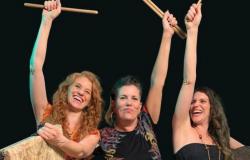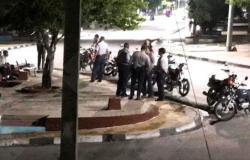Córdoba is already experiencing the Fair of Our Lady of Health, but where does this Marian dedication come from and why is it celebrated? Well, as the Diocese of Córdoba has explained, the fair is an epilogue to the festivities that take place when Easter time arrives.
This year they meet 359 years since the miraculous appearance of the little virgin in May 1665, an invocation known at first as Our Lady of the Source and Health. Since then, this small image has awakened the devotion of the people of Córdoba, it has been a port of prayer and a destination of gratitude and love for the Virgin.
The current chapel, restored in the early years of this century, the cemetery that was annexed to this chapel in the 19th century and the livestock fair that was located in the Health era and that led to what we know today as the Feria de Córdoba are the three visible milestones that give body to this festive tradition around Mary Most Holy.
Source of Health
Every year, since the 17th century, for Easter Pentecost, the Eucharist is celebrated in honor of this Virgin to remember the day of her appearance. This assignment appears in the testament of Simón de Toroa resident of the Alcázar Viejo, an “honest and pious” man who, together with his compadre Bartolomé de la Peña, plowing a piece of land near Puerta Sevilla“they felt that the earth was sinking and opening, discovering in a niche a small image of the Queen of Heaven with her Holy Son in her arms,” as explained by the former Director of the Municipal Museums, Mercedes Valverde Candil, in the conference given. in the Chapel of the Góngora Institute in Córdoba in May 2009.
That day Valverde narrated “the rare beauty and grace that did not reach an inch supported by small effigies of graceful angels” when referring to the sacred image of Our Lady of Health.
Witnesses of a devotion
The will of Simón de Toro reveals the origin of this devotion thanks to the research carried out by the city’s chronicler Jose Valverde Madridfather of the speaker, who located the memory of that devout Cordoban in the archive of notarial protocols.
Through these writings, the creation of the hermitage in honor of the Virgin is explained while at the same time devotion spread through the city and there were many people from Córdoba who went there to take care of their own illness or that of a family member.
Soon it spread healing fame of that well on whose border the image had appeared and faith grew until granting the small piece found the title of Our Lady of Health by popular acclamationa people who went to the well with glasses, jugs and jugs to collect the miraculous water.
Simón, encouraged by the multiple visits began to build the chapel that with the alms of many would end up being erected. The holy well was included inside the chapel where the blessed image was found and the altar was erected on it.
Eight years after the apparition, as devotion to Our Lady of Health grew, the bishop of Córdoba at that time, Francisco Alarconwhich encouraged the celebration of a lucid procession on the second day of Easter Pentecost with the participation of the two Chapters, the Franciscan Community and the Venerable Third Order.
When Simón de Toro died, the service and maintenance of the hermitage was left in the hands of his friend Bartolomé de la Peña and he continued the work on the inn, house and atrium. He continued to serve the Virgin until her death, when he delegated her care to her grandson. At the same time, the fervent devotion of the monks of the Royal Convent of San Francisco to Our Lady of Health grew, as a custom, for centuries they visited her and asked to be buried next to the primitive hermitage.
Hermitage of Our Lady of Health
In it 19th century, the hermitage and the orchards that surrounded it underwent great transformations. The small chapel built by Simón Toro was already insufficient for the numerous parishioners who came to pray to the Virgin, especially during religious functions, pilgrimages and fairs.
The deterioration of the original chapel and the influx of public led to the construction of a new one in front of the previous one, a new orientation and greater capacity. With the invasion of Napoleonic troops, the French custom of burying the dead outside churches was imposed. The area next to the new Chapel of Our Lady of Health was then enabled as a cemetery, which had already served years before to bury the Franciscans for their devotion to the Virgin.
While the chapel was being built, the sacred image was deposited in the Chapel of the Venerable Third Order of the Royal Convent of San Pedro of the Order of the Seraphic Father San Francisco. His arrival filled the community with joy, embracing that devotion for centuries.






